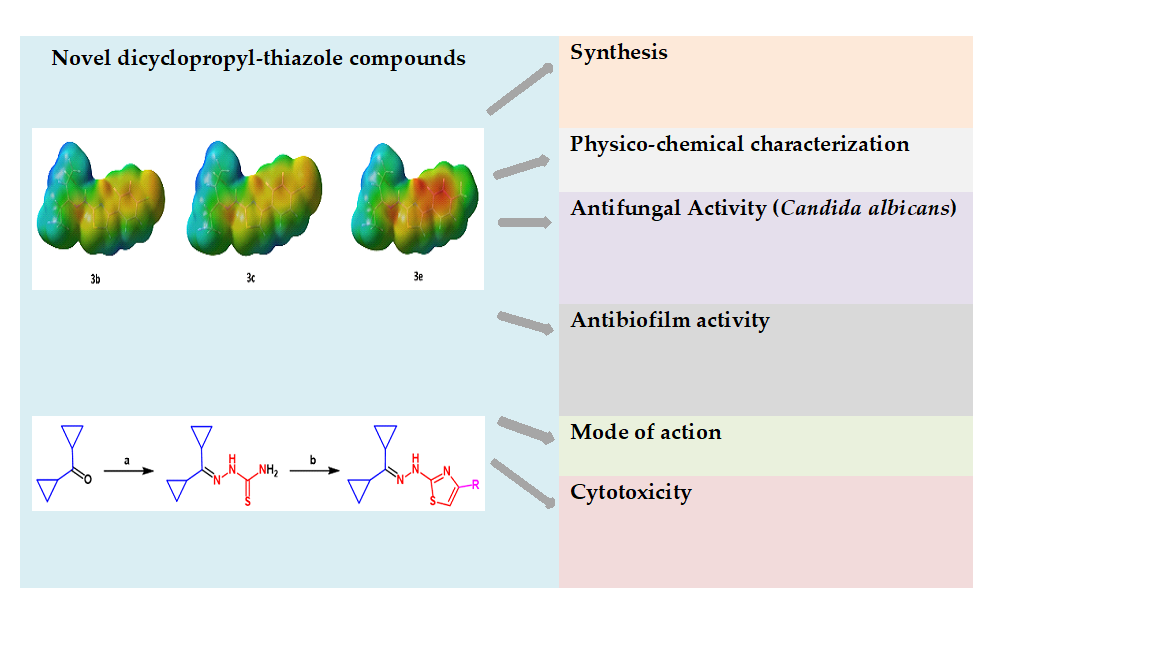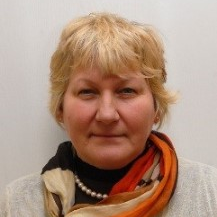Preprint
Article
Synthesis and Physico-Chemical Characterization of Novel Dicyclopropyl-Thiazole Compounds as Non-Toxic and Promising Antifungals
Altmetrics
Downloads
242
Views
292
Comments
0
A peer-reviewed article of this preprint also exists.
This version is not peer-reviewed
Submitted:
01 May 2021
Posted:
05 May 2021
You are already at the latest version
Alerts
Abstract
There is a need to search for new antifungals, especially for the treatment of the invasive Candida infections, caused mainly by C. albicans. These infections are steadily increasing at an alarming rate, mostly among immunocompromised patients. The newly synthesized compounds (3a-3k) were characterized by physico-chemical parameters and investigated for antimicrobial activity using the microdilution broth method to estimate minimal inhibitory concentration (MIC). Additionally, their antibiofilm activity and mode of action together with the effect on the membrane permeability in C. albicans were investigated. Biofilm biomass and its metabolic activity were quantitatively measured using crystal violet (CV) staining and tetrazolium salt (XTT) reduction assay. The cytotoxic effect on normal human lung fibroblasts and hemolytic effect were also evaluated. The results showed differential activity of the compounds against yeasts (MIC = 0.24-500 µg/mL) and bacteria (MIC = 125-1000 µg/mL). Most compounds possessed strong antifungal activity (MIC = 0.24-7.81 µg/mL). The compounds 3b, 3c, and 3e, showed no inhibitory (at 1/2 MIC) and eradication (at 8 x MIC) effect on C. albicans biofilm. Only slight decrease in the biofilm metabolic activity was observed for compound 3b. Moreover, the studied compounds increased the permeability of the membrane/cell wall of C. albicans and their mode of action may be related to action within the fungal cell wall structure and/or within the cell membrane. It is worth noting that the compounds had no cytotoxicity effect on pulmonary fibroblasts and erythrocytes at concentrations showing anticandidal activity. The present studies in vitro confirm that these derivatives appear to be a very promising group of antifungals for further preclinical studies.

Keywords:
Subject: Chemistry and Materials Science - Analytical Chemistry
Copyright: This open access article is published under a Creative Commons CC BY 4.0 license, which permit the free download, distribution, and reuse, provided that the author and preprint are cited in any reuse.
MDPI Initiatives
Important Links
© 2024 MDPI (Basel, Switzerland) unless otherwise stated






